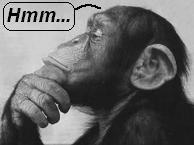This week, I received Brewery History, No. 139, in the mail. A freebie. It was gratefully received as so few packets and packages come my way these days. Time was the mail brought cheques for ads, couriered samples of beer, love letters, job offers. It’s been too quiet lately. More mail would be good. But, ripping open the UK postmarked brown paper envelope, I had a sense that other things had arrived – ideas. No. 139 is the special issue of Brewery History dedicated to Michael Jackson. “Yow-za!” thought I. “This’ll be good.” And, as Hemingway and the God of the Old Testament have told us before, it was good.
Yet, something twigged. That bit of priggery I hate yet carry like a fault of DNA. That little desire to ask “is that really correct?” and, worse, to ask it out loud. Here is my problem:
…certain classical examples within each group, and some of them have given rise to generally accepted styles… If a brewer specifically has the intention of reproducing a classical beer, then he is working within a style. If his beer merely bears a general similarity to others, then it may be regarded as being of their type.
That is a quotation of Michael Jackson’s included in Martyn Cornell’s article “Michael Jackson and beer styles” found at pages 12 to 18 of good old No 139. The associated footnote states: “15. Jackson, M. (ed.)(1977) The World Guide to Beer. London: Mitchell Beazley, p. 14.” I have that book. You know, I don’t have all the books but I do have that one… albeit a Canadian first edition. Here is the whole quotation to a section of the book entitled “The classical beer-styles” (note that hyphen):
Beer fall into three broad categories: those which are top-fermented; those which are brewed with some wheat content (they are also top-fermented); and those which are bottom-fermented. There are certain classical examples within each group, and some of these have given rise to generally-accepted styles, whether regional or international. If a brewer specifically has the intention of reproducing a classical beer, then he is working within a style. If his beer merely bears a general similarity to others, then it may be regarded as being of their type. Such distinctions can never be definitive internationally, since the understandings of terminology varies between different parts of the world.
Now, let’s be clear. I am not suggesting Martyn has done something wrong. I am also really not saying that Jackson did not describe styles. I just think he has actually done something more than we have noticed. He has defined at least three classes: categories, styles andtypes. And, then, he organizes those classes. On pages 14 and 15 of his second book, Jackson goes on to describe 23 styles of beer under those three classes up there. Yet, has he really done what he says he has done? As far as I can see, he has not described “classical examples within each group, and some of them have given rise to generally-accepted styles.” He offers no examples. In fact, because he adds that fourth classifying word “group” out of which these “examples” come, well, it is not clear what he has done. And he includes definitions like “Ur-, Urtyp” that are not of the same class of concept (whether “type” or “style”) as the others. It’s all a bit of a mix.
It’s now thirty four years since Jackson’s paragraph was published. What it really represents, as Martyn’s article points out, is the beginning of a concept that he and others used to go on to define how we beer nerds think about beer. Yet, as far as I can tell, what we now call “styles” were really, in 1977, “types” to him. Consider this: these days the general convention is that 100% of beer brands need to fall into one style or another. There is no room left over for un-styled beer. Back then, by contrast, styles were not all the wedges on a pie graph. They were classic examples arising from groups. And groups related to types. For Jackson, at the outset, “styles” were still something of a hybrid idea somewhere between “type” and a further fifth category which he went on to call “classics” – which is an idea, from my reading, which leaned heavily towards the singular rather than the class. Perhaps archetypes. Or maybe just best beers ever. All very good ideas in itself to be sure. But ideas that were not yet fully formed.






